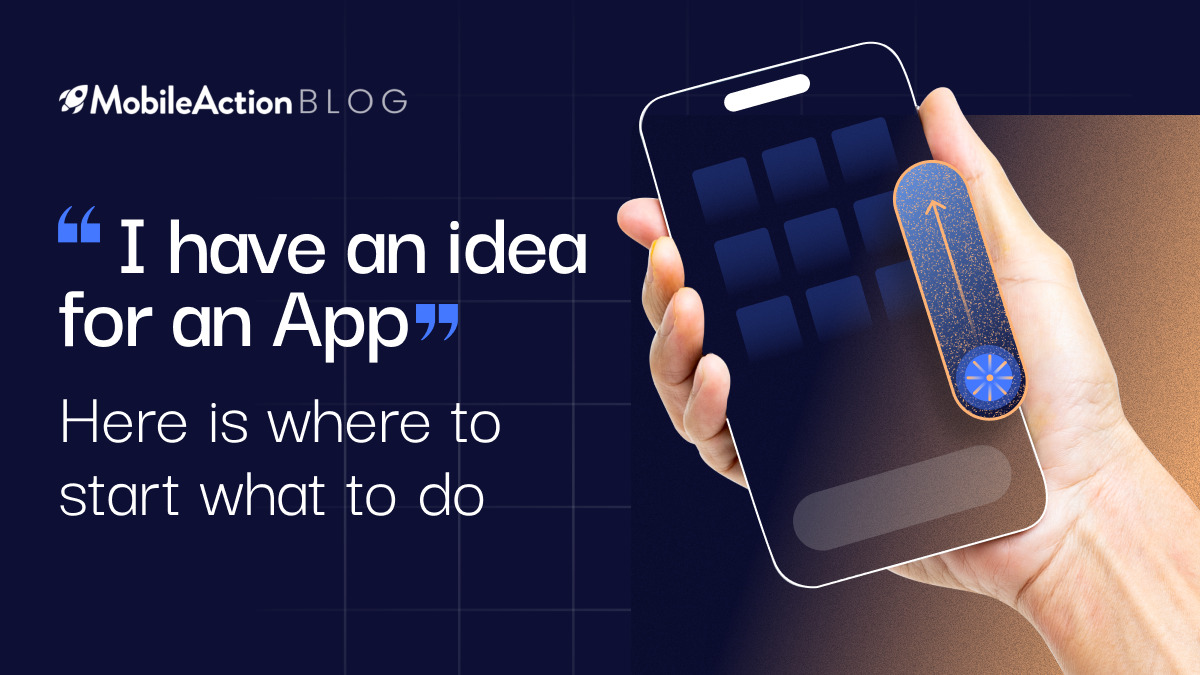You might arrive at some point in your life when you think:
“I really need to start doing something meaningful, I don’t want to have the current job all my life. I don’t want to work for a boss, I want to be the boss by myself!”
And you start considering what you should do. You read about tons of startups and think of ideas for your own business. You watch those startups grow and more often fail, you do the research again, you ask your friends around. And one day you wake up after having a sweet dream and exclaim:
“I have an idea for an app!”

With every new day, you love your idea more and more. You cannot understand how come you never thought of it before and already feeling proud imagining how millions of users around the world are using your app on their smartphones, tablets and even wearable devices.
You don’t tell anybody about your idea at first – not to scare it away. Then you tell your best friend and impatiently wait for the feedback, being afraid to hear something negative. He/she seems to like it and offers a beer to celebrate your great future.
And then one day you wake up and think:
“So, I have an app idea. What’s next?”
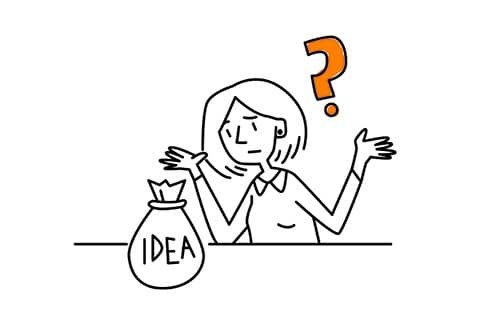
And this is a really important question you have to answer. Do you have time to work on it? Maybe you want to make it the business of your life or just a side job? Do you have money to hire developers? Do you actually know how to turn an app idea into reality? And are you sure that after you make your own app, your users will love the product as much as you love the idea?
All these questions might be hard to answer from the start and a bit overwhelming.
But in this blog post, we will try to help you understand what to do with an app idea.
How to Develop an App Idea
If you successfully passed through the stage of discussing your idea for an app with trusted people and got their appraisals, and if you think it is the right time for you to start doing something exciting, then get ready and patient: developing an app idea is not an easy and fast process.
1. Do the research!

When you want to visit an unknown country, you read tour guides, talk to friends. When you want to eat out in an unknown city, you look for the best option on review websites or apps, talk to locals, etc. If you want to buy a new laptop, you read articles in trusted media and watch Youtube videos. Any time you want to do to buy something new, you do the research first.
The same goes for developing your app. Treat your app idea as a serious business project. You might get very excited and emotional about your concept, but remember that the app business is very competitive. There might be tens or even hundreds of similar apps fighting for users all over the world.
Just imagine: As of the second quarter of 2019, there were 2.46 million apps available on Android, and 1.96 million apps on the App Store. Those are the two biggest stores, don’t forget about the smaller ones.
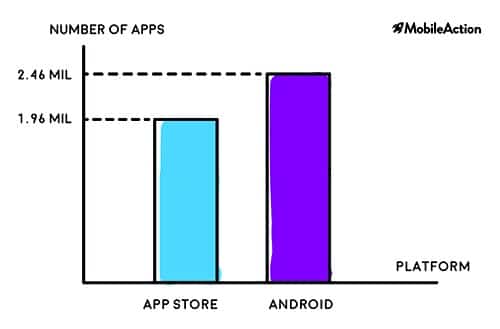
You need to get a clear understanding of what market you’ll be dealing with. The research will also help you answer the question about how to make money with an app idea. In the end, you are not developing an app for altruistic reasons, you will need to monetize it someday.
Like with any business, before developing the app you need to do market research and understand your users. These are some of the questions you’ll have to try to find the answers to:
- What problem will my app help solve / how will it help the users?
- Who are my users? Are they adults or children? Men or women or both? How old are they? Where do they live? What do they do for a living? What devices do they use and how often?
- Are there any other similar apps? How many? In what app stores are they present? How big/successful are they? How many downloads do they have? Do they receive good reviews from their users? What are their users complaining about?
- How can I be different than the competitors? What additional value can I give to my users?
- With all the competition, is my app able to succeed? What pros and cons does my app idea have?
- How do your future competitors promote their products? What do their app listings look like? Do they run ads? (If you want to learn about interstitial ads, check out this blog post!) Do they have app websites, blogs, SoMe pages, and YouTube videos? Do journalists write about them and what?
- How do peer apps make money? Are they showing ads? Do they offer in-app purchases? Do they sell data to third parties?

2. Create a Business Concept
Based on your findings during the research, take your time to craft a business concept. It is really important to write everything down, and not just keep it in your head. Don’t rely on your memory, we all tend to forget some things. And sometimes, while writing you can stumble across new useful ideas.
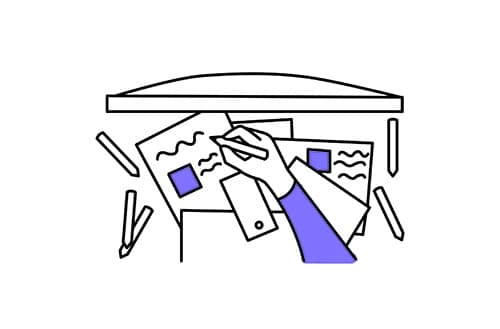
Your business project should consist of several blocks:
- The app – the main idea, advantages for the user, pros and cons, features
- Your users – analysis of your target audience
- Market and your competitors – apps you will be competing against
- Monetization strategy – how to make money from an app idea
- Marketing – how you are going to promote your app
3. Find partners/co-founders
It might be very hard to implement an app idea on your own. It takes time, knowledge, and money. If you feel like you’ll need a partner, try to find one or several with the skills you lack. These can be your friends, former colleagues, or somebody from the LinkedIn network. Some people want to start their business but can’t come up with the idea. Maybe your idea will make them interested.
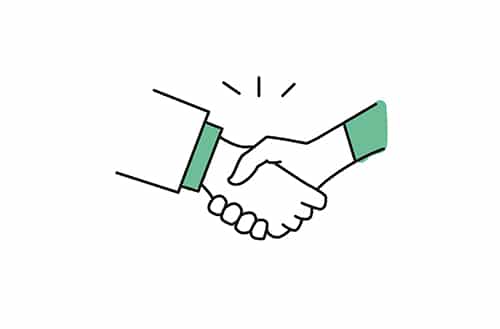
4. Develop the app
Congratulations if you are a developer and can do it on your own with a couple of friends-developers. But if you know nothing about coding, you will need to find an agency or some freelancers to do the job.
Based on your research (Step 1) you will know where you will publish your app – Android, or iOS, or both.
But it’s not only developers who you will need. A UX/UI designer should help you design the app having the wireframes you provide as a reference. The designer and you should already have an idea of the primary and complementary brand colors, and the brand style overall.
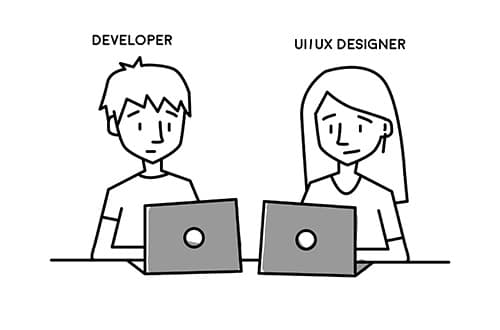
It is hard to estimate how long it will take you to make your app live. By that time, you will learn that not everything you have thought about can be implemented, not all the features can be coded, etc. But don’t get upset! No problem remains unsolved forever!
5. Prepare for the launch and create a marketing roadmap
While developers are coding, you should focus on your app launch and some business development tasks.
Think about the branding
When launching an app, you most likely will not think about building a big brand. Nevertheless, you need to invest time and money in creating your app’s icon and developing the brand style to be consistent with all your visual materials across communication channels.
Learn about ASO
Think about an efficient app listing before launch, and not when you see that you have too few downloads.
ASO (app store optimization) helps you to get a lot of organic downloads – meaning with no money spent on advertising. But it’s not easy if you know nothing about it. So do your research and learn how to:
- Do keyword research
- Find relevant keywords
- Create the right app name
- Design the icon
- Write good descriptions, subheadings
- Design converting screenshots
- Track keywords over time
- Improve your app listing with app A/B testing
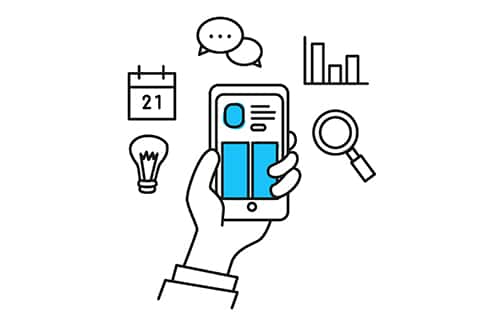
Creating an appealing icon with a designer is a very responsible task. The app icon has a strong impact on the store listing visitors, conversion rate and downloads as a result.
Creating clear screenshots is not less important. Look for best practices; decide whether you want them landscape or portrait; think of the appropriate style.
Think ahead of good relevant keywords and create good descriptions for your app stores. Keyword research is the first step and the base for the successful ASO (app store optimization). If you feel very unconfident with this topic, use ASO tools such as MobileAction or consult professional ASO specialists.
Decide for which countries you will need to localize your app listing from the start, prepare localized app descriptions and app screenshots.
Prepare for the launch
How do you want to make the world know that the new app is released? Is the announcement on ProductHunt enough? Or you want all the national media talking about you? (I highly doubt it but who knows).
If you have a limited budget, think about:
- Sending out emails and messages to friends and family telling them about your app launch and asking to download the app and rate it with 5 stars. Don’t be shy, we are talking about friends and family who love you.
- Post about it in all the possible social networks where you are registered
- Post about your new app on ProductHunt
- Inform the Reddit community about your new app
- Create the list of app review websites, bloggers who review app and write a pitch to them
Craft a marketing roadmap
The launch is only the beginning. Promoting the app further should be one of your priorities. Will you use SoMe? What about creating a landing page and posting in a blog? Do you need any partners?
Even if your app is not your full-time occupation, but a side project, there are some basic things that you must do for your app. Otherwise, nobody will ever find it.
6. Test the app
You are probably very impatient to finally publish your app. But take some time to test it. Let your friends and family play with it for a couple of days. Users are quite demanding. If the quality of your app is not good enough, nobody will use it for a long time, you will get bad reviews, and it will make it very hard to get downloads with poor reviews and low ratings.
7. Publish your app at the app stores and keep up the good work
You might think that publishing your app is the final step, but it is, in fact, only the beginning of a cool adventure.
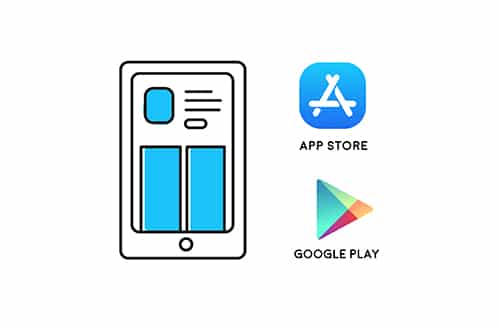
You need to constantly update your app, introduce new features, provide feedback to users, fix the bugs, promote the app, implement activities to improve retention rate, grow the user base, and of course – you need to make money with it. So exploring new monetization opportunities while keeping good engagement and retention rates will keep you busy.
How to Protect and Copyright an App Idea
In the process of developing your app, you probably were sometimes bothered with the question:
“What if somebody steals my app idea and launch the app first?”
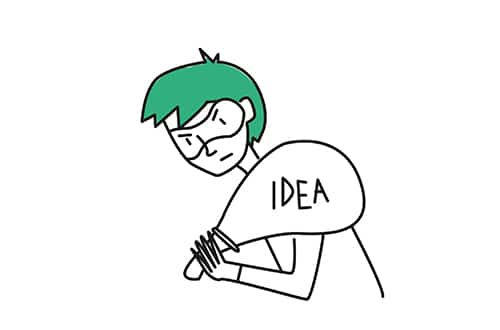
You were so busy with planning, developing and creating that you didn’t get to do the proper research and understand how to protect your app idea. If you are reading this blog post before launching the app, it’s even better. There are some important things you could do to protect your app idea before publishing it to the app stores. If you have already published the app, then don’t delay this topic any longer. Look at the tens of apps that look like clones and think if you want to see copies of your app at some point. Here are some tips on how to protect an app idea:
Sign an NDA with freelancers, partner companies, and agencies
The mutual signing of a Non-Disclosure Agreement (NDA) is a way to make sure that all the shared information will be kept confidential between the signing parties.
If you hire freelance developers/designers/marketers, ask them to sign this legal document. When you start working with agencies, any other partner companies, it is also a good idea to sign an NDA. Also, if you want to present your idea to possible investors, signing an NDA is inevitable. This might sound obvious, but remember that you should mutually sign an NDA BEFORE you start sharing any information related to your app and business.
Protect your intellectual property rights
When a developer creates the code for your app, he owns it and has all the rights to use the code – because he created it. When a designer creates an icon and screenshots for your app, she can then use it for her own purpose – because it’s her work. This will not happen if you include the Intellectual Property Protection paragraph in your contract.
In this paragraph, you should clearly state that all the content, designs, code, etc. produced by your developer/designer/marketer become your intellectual property and they cannot treat it as their own. It’s life. What if you get in an argument with your freelancer and they will refuse to pass you the works? Even if you work with friends or family, make sure to sign the contract and include a paragraph protecting your intellectual property rights for everything produced by the freelancer. You can let them include it in their portfolio later, but they will not be able to use it as their own.
Copyright your app
According to the United States Patent and Trademark Office (USPTO):
“Copyright is a form of protection provided to the authors of “original works of authorship” including literary, dramatic, musical, artistic, and certain other intellectual works, both published and unpublished. The 1976 Copyright Act generally gives the owner of copyright the exclusive right to reproduce the copyrighted work, to prepare derivative works, to distribute copies or phonorecords of the copyrighted work, to perform the copyrighted work publicly, or to display the copyrighted work publicly.”
United States Patent and Trademark Office (USPTO)
Think of getting the copyright to protect your app. Note that copyright does not protect the idea of your app. Copyright laws only refer to the expression form. This is how USPTO explains it:
“The copyright protects the form of expression rather than the subject matter of the writing. For example, a description of a machine could be copyrighted, but this would only prevent others from copying the description; it would not prevent others from writing a description of their own or from making and using the machine.”
United States Patent and Trademark Office (USPTO)
So if you get a copyright, it doesn’t restrain other app developers to build an app with similar features. But it will protect your source code, graphics, designs, texts, etc.
Get a Trademark
When you start seeing that your app is getting more and more downloads, you should rush to get a trademark for your app. The trademark will protect the name of your app and the logo. If you get a trademark and then decide to completely change your app’s name, app icon or logo, they will not be protected by the trademark.
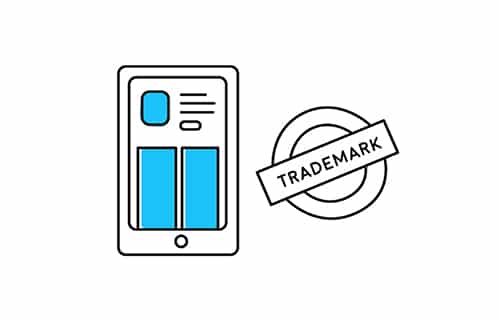
Again, like with copyright, the trademark will not protect your app idea, but it will prevent other apps from using your logo or copying the name of your app.
To get a trademark in the US, you need to file an application to the United States Patent and Trademark Office (USPTO). You can do it online. The application process is not very complicated, and the fee depends on the type of application form you decide to use and the number of International Classes of goods or services in the application. If you apply online, the initial application fee can vary from $225 to $400. Additional fees may apply in some cases. It is more expensive to file paper applications.
If you get a trademark in the US, then your app is protected by US laws. However, if your app is also popular in Europe, you should register your trademark in the European Union. European Union Intellectual Property Office (EUIPO) is responsible for trademark registration. You can apply online. The basic fee for online application is 800 EUR. The trademark from the EUIPO will protect your app in all the European Union countries.
Go after unscrupulous app developers who violate the law and infringe your rights
If you see somebody using your logo, your copy, your copyrighted designs, try to contact these people and politely ask them to stop violating the law. If they don’t agree or don’t reply, file a complaint to the app stores. They tend to penalize app developers who break copyright laws.
How to Patent an App Idea
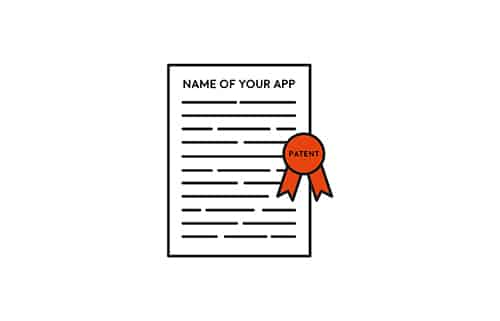
A patent is the most reliable way to protect your idea. However, to get a patent, your idea needs to be a true invention – useful, novel and non-obvious. If somebody else patented something similar before you and you didn’t know about it, you won’t get a patent.
There are very strict criteria your idea should meet to get a patent. According to the research published in the Yale Journal Of Law and Technology, out of 2.15 million US patent applications from 1996 to 2013, only 55.8% “emerged as patents without using continuation procedures to create related applications.” If you think that your app is revolutionary, have a closer look at the USPTO website responsible for granting patents in the USA. If you want to apply for a patent in Europe, you’ll need to deal with the European Patent Office (UPO).
In theory, it is possible for the mobile app to get a patent, but most apps do not meet very strict criteria and are not eligible to get a patent. Remember how Instagram copied the Stories idea from Snapchat? There was huge buzz online, but no legal actions from the Snapchat’s side. If the idea was so boldly used, why Instagram did not carry any responsibility?
The thing is that they didn’t break any laws. It was not an infringement of the copyright laws (remember, an idea cannot get copyright, only its expression), and the idea of Stories was not patented – it simply didn’t meet all the criteria to be eligible to get a patent. Stories are just another way of showing a person’s Status (how they call it on Facebook). The difference is that with Stories, you are showing this status for a limited period of time. So there is no invention here.
Some experts argue that apps do not need patents. The patent that might cost you up to $20000 will not help your business. Patenting requires lots of time and tons of money. And most probably, you will not get a patent.
It might take up to 5 years, to get your utility patent approved in the US (remember, you have no guarantee you will be granted a patent). And even filing an application takes time.
You will most likely need help from the patent attorney. He will perform patent searching for you, draft a patent application, file it to acceptance and provide other professional assistance. So, besides spending much time, prepare to spend much money on attorney fees. Along with expenses related to app development and marketing, for many developers, this can be an unbearable budget.
And think again about the requirements. Everything in the app has to be novel. Which means that your code should also be new and unique. Ben Lee, a co-founder of the digital agency Rootstrap, argues that we live in the open-source world where any type of code can be found in the open-source libraries. And even if you have not used them to write the code for your app, it does not mean it is not there. So, legally, your new app will not be eligible for the patent.
How to Sell an App Idea
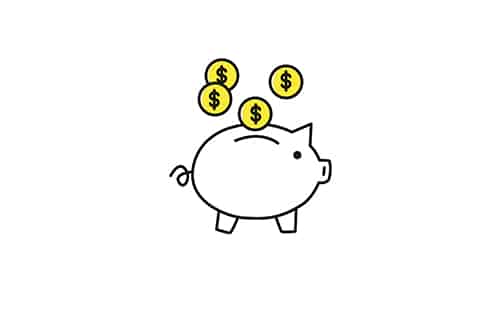
Developing your app by yourself is fun, but quite challenging. Especially when it comes to money. The app business is thriving. To create and promote an app, you need to invest. At some point, you might think about getting additional funding from investors. And that’s why you need to clearly understand how to sell an app idea.
To start, let’s be honest: you have fewer chances to sell a mere app’s idea than a working product. Thousands or even millions of people have ideas in their minds. Unless your idea is revolutionary (and maybe has a patent), it is better to approach a potential buyer with a ready solution. A published and successful app is the best option. But if you don’t have it, make sure to develop a working prototype.
But in any case – whether you have a published app or a working prototype – you really need to prepare before approaching a potential investor.
Let’s have a look at where you can get funding from and sell your app idea.
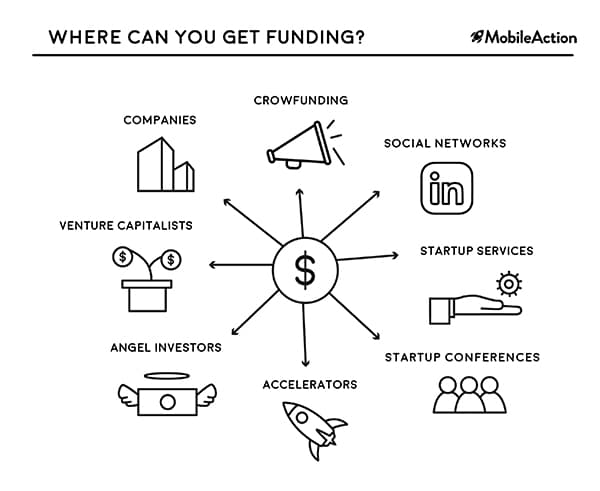
1. Crowdfunding websites
If you believe that you are able to create a product for people that will be admired, you can try getting their support first. Crowdfunding websites let you post information about your idea and start a crowdfunding campaign. The audience of such platforms comprises of early adopters interested in tech and innovation. They simply want to support the products they personally like or are interested in purchasing the concepts. If you believe you can get enough funding with the dedicated fan base, try to start crowdfunding campaigns on platforms like Kickstarter, Indiegogo, etc. Search such websites locally: there can be a good option in your home country. There is also a project called Crowdfunding that can help compare crowdfunding platforms and choose the one that fits you the best.
2. Professional social networks
LinkedIn is a good place to grow your network globally. Xing is very popular in Germany. These social networks are built for professionals and are aimed to grow your business contacts. Add as many relevant people to your network as possible. Regular posting about your app idea or working business is a good way to gain attention and raise interest among potential investors.
Beware not to disclose too much detail about your idea. When you make public posts, everybody can read them, including your competitors.
3. Startup services
Startup services are online platforms where you can post your idea and wait for the potential investors to contact you. Some of the most popular include platforms like Startups.com, Gust, and many more.
4. Start-up conferences
Not only startups look for investors. Investors are also looking for promising startups they can support. Startup conferences and events are quite often visited by potential investors ready to share some money. Try to find such events close to where you live. If you don’t find an investor, you’ll definitely discover it’s a good networking opportunity.
5. Accelerators and business incubators
Startup accelerators and business incubators are organizations that can help you develop your business idea and turn the concept into a profitable project. They achieve it by coaching you and the team and providing necessary assistance. Not only can you get mentorship through accelerators and business incubators, but also seed investment opportunities. Accelerators usually work with local startups, so you should look for them where you live. The top accelerators by exits are Y Combinator, 500 Startups, Techstars, Plug and Play, and MassChallenge.
6. Angel investors
You can register with a business angels network that allows establishing contacts with angels – individual or small group investors interested in early-stage start-ups. They provide funding and can introduce you to other important business contacts able to manage your start-up and launch your product. Try to look for angels on angels network websites like Angel Capital Association, The UK Angel Investment Network, European Business Angels Network. There are also local business angels networks targeting a specific country or region, for example, Nordic Business Angels Network, Indian Angel Network, etc.
7. Venture capitalists
Venture capital funding usually comes from a firm or fund, not from individuals like with angels. The common thing between venture capitalists and angels is that usually, they give money in exchange for equity in the start-up. They take the financial risk investing in promising early-stage startups and hoping that some of the companies they support will become successful in the future.
8. Private companies
There are big app development companies that buy smaller publishers. For example, if the company wants to expand its presence to some other markets where its own apps are not popular, they might consider buying successful apps there. If you are interested in selling not only an app idea but your app business as a whole, you can look into this direction as well.
How to Pitch an App Idea
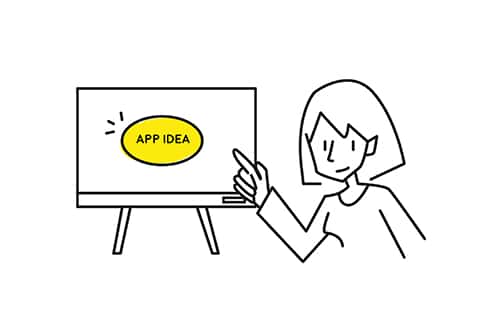
After you define how exactly you want to get funding, the next thing is to think about how to pitch an app idea. Of course, it depends on who you are pitching to – crowdfunding community, LinkedIn networks, angels or venture capital firms. In either way, like with everything new, you do your research first and prepare for the pitch while looking for the answers to such questions:
Who is your potential investor?
- What is their interest?
- What other projects are they currently working on?
- How much do they usually invest?
How can your app be useful to your potential investor?
- Will it solve any of the investor’s problems?
- Is your relevant to their portfolio?
- Will it bring any value to the investor?
When you have a list of investors that you think are relevant to your app, prepare the pitch. People argue what’s the best way to pitch the investors. Some say that personal presentation is the only right way. Others believe that a brief email introduction, a LinkedIn connection or a phone call at the beginning will suit better. The thing is there are no right answers. All people are different (and investors are people, right? 🙂 ), and they need a different approach. Where and when you present your idea can be different. You can accidentally meet a potential investor in a plane on your way to Hawaii paradise and chat it over it during a round of cocktails in a bar. So practicing an elevator pitch might be a good idea.
The most important is the content of your pitch. You should be able to convey:
- What problem your app is solving and how;
- Who are your users
- Why is your product unique (and it must be unique in some areas)
- Who are your main competitors and why do you think your app can fight them
- How will you market your app
- How much money do you need
- What financial success you are expecting from your business in the future.
Of course, you need to support your ideas with relevant data, numbers, market research, etc. But also keep in mind that you want to sell not only your product but also yourself and your team. Sometimes investors contribute money not to companies but to people they believe in. So look professional, confident, and reliable.
Inspiration Message Instead of the Summary
We hope that your idea picked the right timing to come into your life. Developing your app idea can become the most complicated and at the same time the most exciting and exhilarating thing you’ve experienced. Watching your idea come true and succeed is the best reward while having your concept struggle and fail will bring you the most valuable lesson to keep in mind for the future.
Schedule a demo with us for more insights and to boost your app growth.
